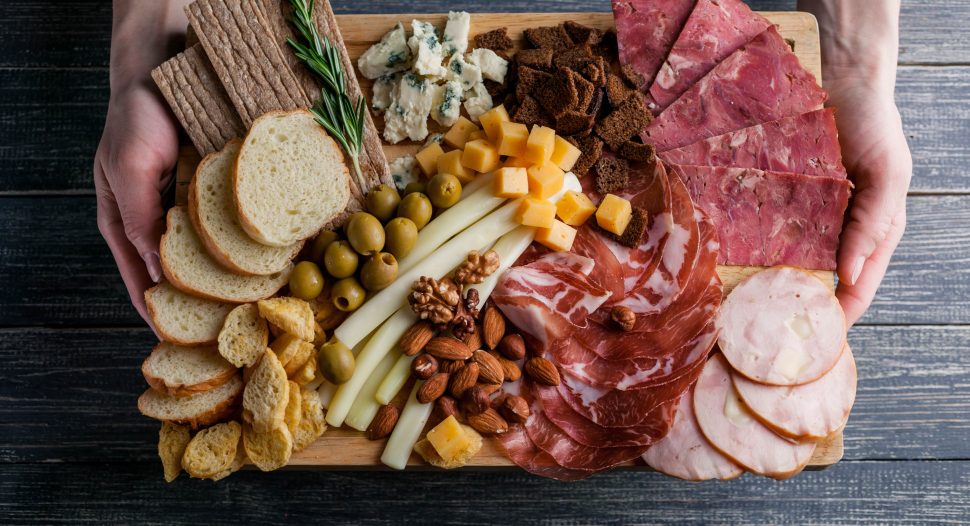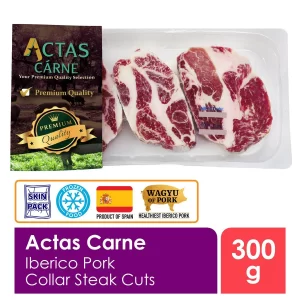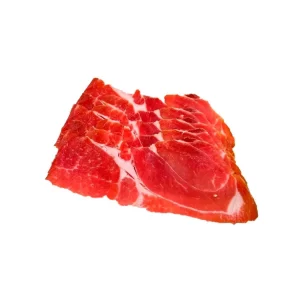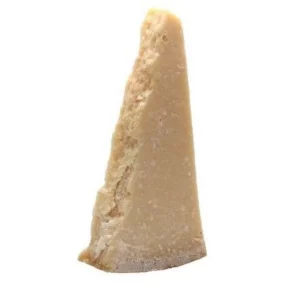Fancy-sounding ingredients you may have heard of but may know little about. Find out where they’re from, how they’re made, and how to use them!
Parmesan or pecorino—what’s the difference?
What does “filet mignon” really mean—and why on earth is the “t” and “g” silent?
Specialty ingredients with continental roots can be hard to pick and even harder to pronounce. What do they mean? How are they different—and why? And how do you use them?
Don’t worry—we’ve got you covered! Here’s your cheat sheet to the specialty meats and cheeses you’ve always wanted to know about. By the end of this article, we guarantee that all your guests will be thoroughly impressed with your knowledge!
Fresh meat
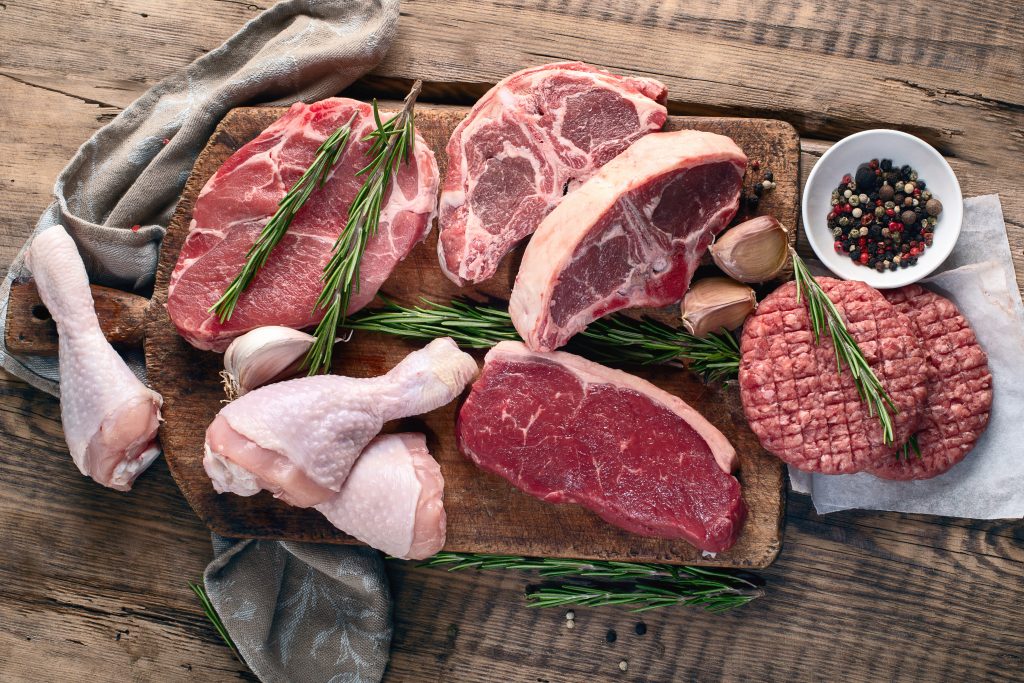
Different regions are home to different breeds of livestock. The climate, as well as how they’re reared, all affect the taste and texture of your meat!
Iberico pork
“Iberico” refers to the Iberian pig, a traditional breed native to the Iberian Peninsula of Spain and Portugal. Its unique flavour is deeply rooted in the Mediterranean ecosystem where the land is rich in natural resources. The Iberian pig feeds on special acorns that are also native to the area!
Different regions are home to different breeds of livestock. The climate, as well as how they’re reared, all affect the taste and texture of your meat!
Iberico pork
“Iberico” refers to the Iberian pig, a traditional breed native to the Iberian Peninsula of Spain and Portugal. Its unique flavour is deeply rooted in the Mediterranean ecosystem where the land is rich in natural resources. The Iberian pig feeds on special acorns that are also native to the area!
Kurobuta
Translating literally to “black pig”, Kurobuta refers to the Japanese method of raising pure-bred Berkshire pigs. Their feeding regimen is designed to produce the trademark intense flavour and juiciness of its meat.Kurobuta meat is what wagyu is to beef lovers!
Wagyu beef
Prized for its luxurious texture and rich flavour, wagyu beef is the jewel of the beef lover’s world. While it is a myth that Japanese wagyu cattle are massaged and fed beer, they are indeed raised with a specific method of feeding that’s similar to Kurobuta pigs. This is to ensure maximum marbling—or an optimal level of intramuscular fat within the meat. Better marbling means better flavour and texture, which is why wagyu beef is graded according to its marbling level—from C1 to the illustrious A5!
Filet Mignon
The tenderloin is the tenderest cut of beef because it comes from a muscle that isn’t weight-bearing. The filet mignon (meaning “cute fillet”, roughly pronounced fee-lay meen-yon) is actually the tenderest part of the tenderloin! Found at the narrow front part of the loin, it’s the most sought-after cut of beef. This is not just because of its melt-in-the-mouth texture, but also because there’s such a small portion in each animal. One famous way to prepare a filet mignon is in the dish “steak au poivre”—French peppered steak.
Pork Jowl
A cut taken from below the pig’s cheek, pork jowl has a unique fat content and quality that makes it distinct from pork belly. It boasts a more complex flavour and is highly prized because there’s such a small portion of it in each pig. In Italy, it’s sometimes cured like bacon, turning it into “guanciale”—the star ingredient in a traditional carbonara pasta!
Cured meats
The most renowned regions for continental cured meats are Italy and Spain. Here are the smoky, spicy, delightfully salty stars of each country!
Italy
Prosciutto
Referring to the dry-cured ham leg of the pig, prosciutto (roughly pronounced pro-shoe-toe) tends to be thinly sliced. It can be served as it is, cold with a fruit such as rock melon. What a classic pairing! You could also enjoy it on top of a pizza or toasted in sandwiches such as a panini.
The Cellar Door Prosciutto, however, is so good on its own:
Pancetta
Unlike prosciutto, pancetta comes from the pig’s belly, just like streaky bacon. It’s cured with a lot more complexity than bacon, however, and is unsmoked. In recipes, it is often used as a tastier, less smoky alternative to bacon. It’s also sometimes used in carbonara pasta as an alternative to “guanciale” (mentioned above), which is a lot harder to find.
Spain
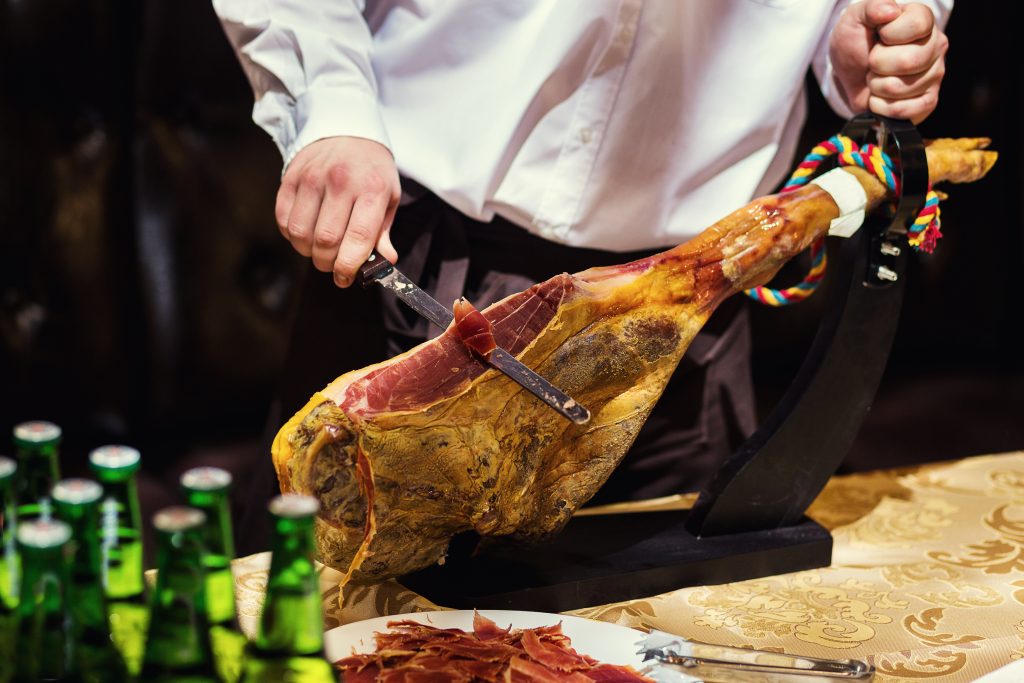
Jamón
One of the most globally recognised food items in Spain, Jamón (ha-mon) is cured ham from the pig’s hind leg.
It’s also known as serrano ham—or sierra ham—with reference to a particular pig breed that lives on the Sierra mountain range.
You’ll find it thinly sliced in tapas or eaten as it is. There’s no better way to get the most out of its pure, savoury flavour!
Chorizo
Although made in other regions too, chorizo is traditionally rooted in Spain. It’s a pork sausage made with red peppers called pimentón that gives it a distinct spiciness, smokiness, and a deep red colour. While it may be sliced and eaten without cooking, it also provides a meaty depth and spicy lift to dishes such as sandwiches, stews, tacos, and the famous Spanish paella!
To discover all these specialty ingredients and more, don’t forget to check out our Fresh Premium Selections campaign from 18 August – 31 August 2022 & save up to 52% OFF!
Cheese
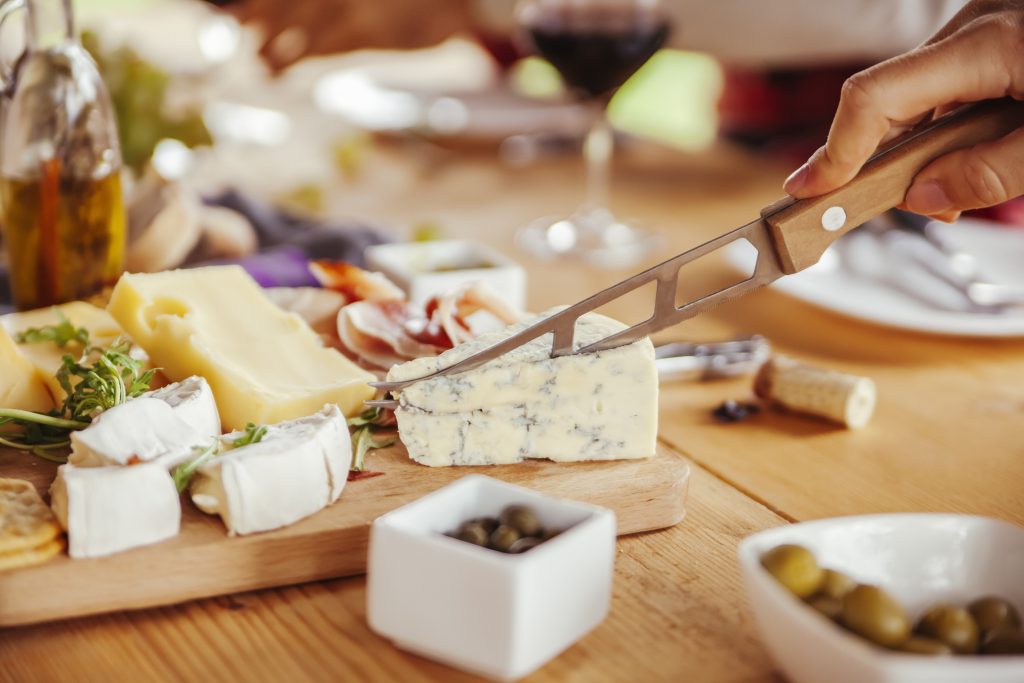
Get to know gourmet cheeses, most of which don’t only come in square slices. They’re categorised according to firmness: hard, semi-hard, semi-soft and soft. Here are some of the “grate”-est cheesy hits that you should know more about!
Hard cheese
Parmesan
Not the stuff you get at the bottom of your pizza box! Traditional parmesan, known as “Parmigiano Reggiano”, has a complex flavour that’s slightly salty, nutty and savoury, yet it can also be sweet.
Parmigiano Reggiano gets its name from the two Italian provinces that it’s largely produced in: Parma and Reggio Emilia. Hailed as the “King of Cheeses” by many enthusiasts, it’s an ingredient with a protected designation of origin (PDO). This means that only a special kind of parmesan from that region can be referred to as “Parmigiano Reggiano”.
Colla Parmigiano Reggiano:
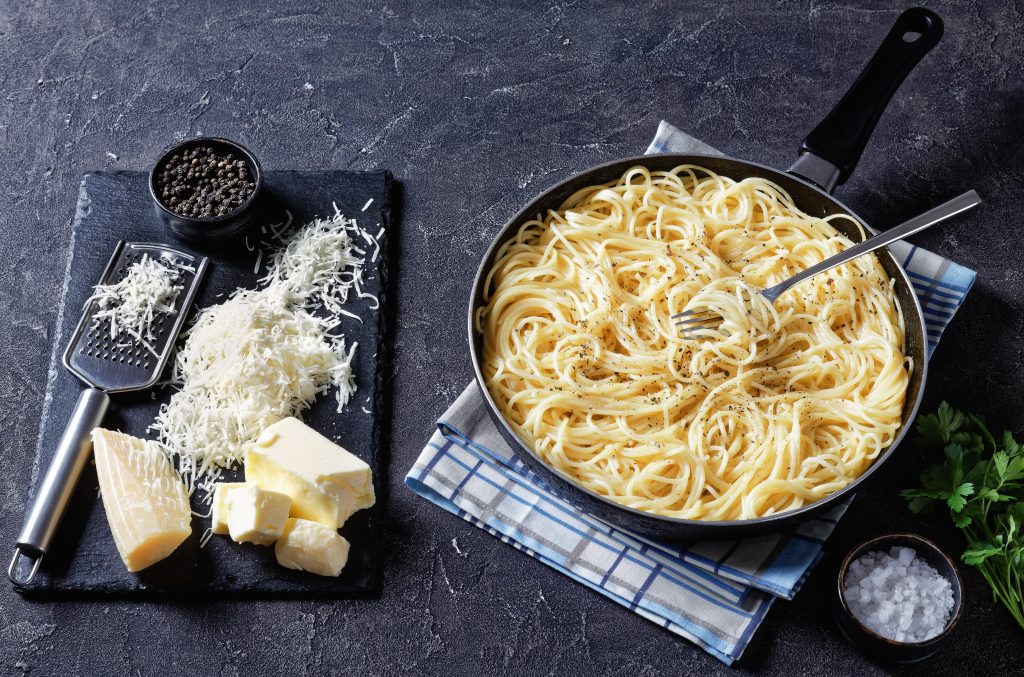
Pecorino
Often confused with parmesan, pecorino is slightly softer and offers a slightly different flavour and function. Unlike parmesan, which is made from cow’s milk, pecorino is made from sheep’s milk. It’s a saltier, stronger cheese that also has a bit of spiciness to it. Though produced in various regions across Italy, the most famous is Pecorino Romano from Rome!
The best culinary use of pecorino is in a traditional cheese and pepper pasta known as “cacio e pepe”! It can also be found in the more common, ubiquitous carbonara pasta.
Semi-hard cheese
Gruyère

A Swiss cheese, gruyère is best known for its complex flavour with a texture that becomes incredibly soft and oozes like goo when melted. This makes it a great cheese to use in fondues, baking, as well as classic French dishes like the croque monsieur (a French ham and cheese sandwich) and French onion soup!
For sandwich aficionados, adding a slice of gruyère to a grilled cheese on crusty bread is the pinnacle of atas-ification!
Semi-soft cheese
Manchego
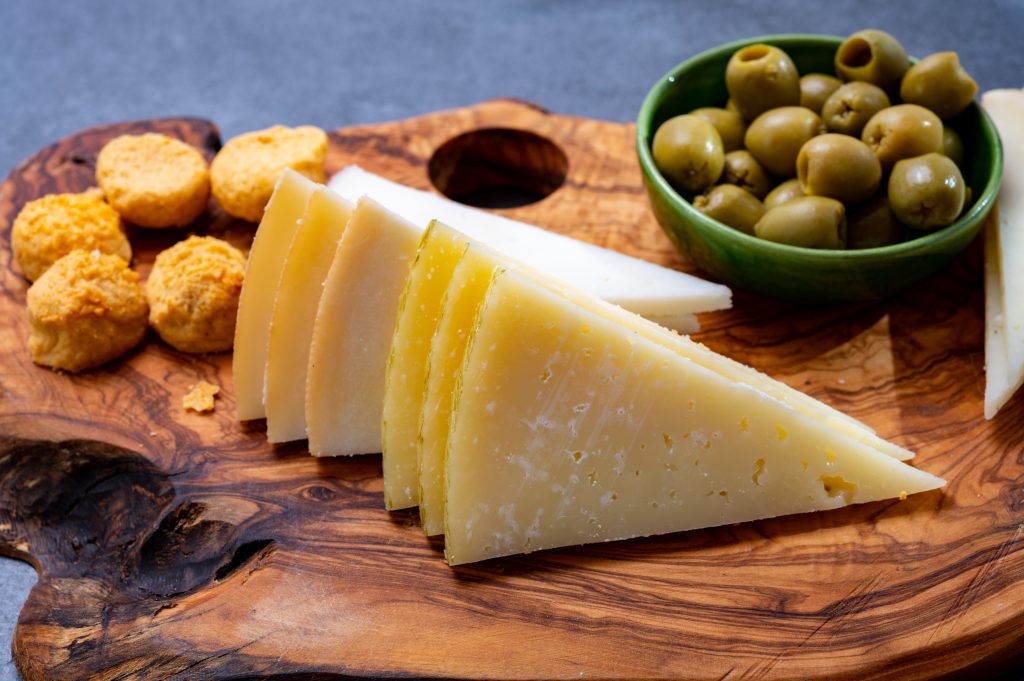
Made from the milk of the Spanish manchega sheep, manchego is fruity, nutty, and pleasantly piquant. It features a buttery richness, and isn’t as strong on the palette compared to more intense cheeses like parmesan and gruyere.
This makes it quite the crowd pleaser, especially for those who may not be keen on the intensity of cheese. Definitely a must-have on any charcuterie or cheese board!
Soft cheese
Burrata
You may have indulged in a ball of luxuriously creamy Burrata at a fancy Italian restaurant before. Made with mozzarella, cream, and cow’s milk (sometimes with Buffalo milk), it’s best served cold as part of a salad. Enjoy its simple flavours in a Burrata Caprese with some fresh basil, fresh tomatoes and a drizzle of olive oil and balsamic vinegar!
Love Burrata? Whip up this simple Burrata & Chive Mashed Potatoes recipe now!
Brie
Named after the region of France from which it originates from, brie cheeses are another staple on the charcuterie or cheese board. It offers a creamy mouthfeel and a flavour that intensifies as it matures. It’s very similar to camembert, another French cheese originating from a different region. Brie is also sometimes used in cheesecakes!
Get ready to atas-ify your culinary repertoire and wow your guests, friends, and family! We hope this article has enriched your know-how of our favourite specialty meats and cheeses. Check out FairPrice’s premium fresh selections campaign from 18 August – 31 August 2022 to 52% on your favourite specialty ingredients! When you shop with us online, we always ensure that your goods are in their best quality during picking and delivery, thanks to our team of dedicated pickers and our FairPrice freshness guarantee. Go ahead, get shopping, and happy eating!
